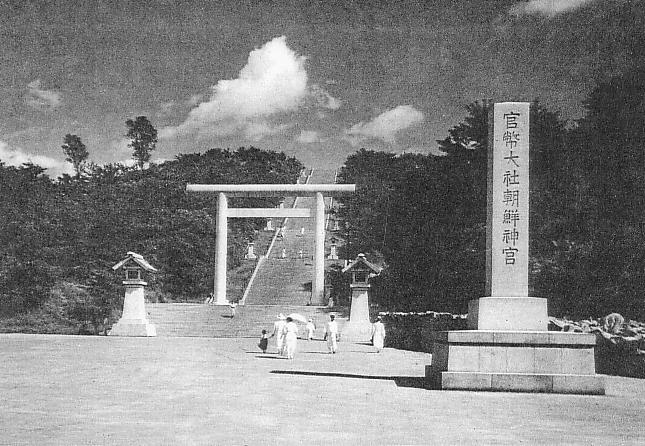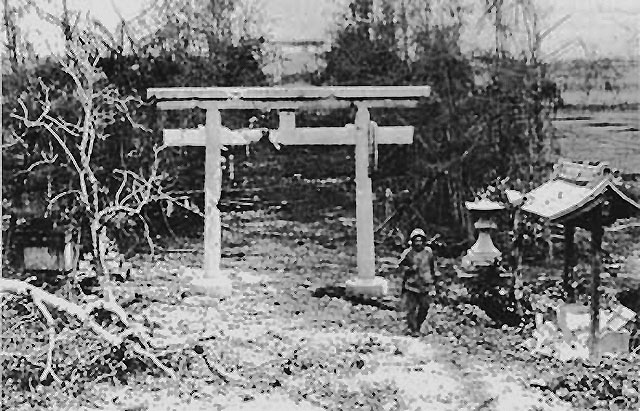The information below about former overseas shrines is taken from a paper in the Japanese Journal of Religious Studies 37/ 1 (2010) by Nakajima Michio, entitled “Shinto Deities that Crossed the Sea.” It covers the spread of shrines in areas under Japanese political sway, which explains why it ignores shrines in Hawaii and Brazil.
Nakajima comments; ‘The Japanese government, which encountered resistance on foreign soil, saw those newly erected Shinto shrines as an opportunity to launch a policy that would incorporate them into its colonial governing system; consequently, it established government-sponsored Shinto shrines in its colonial territories. Taiwan and Korea functioned as testing grounds for what proved to be the quite successful attempt to indoctrinate native peoples into Shinto.’
******************************************
There were 611 jinja and 1,029 sha/shinshi—altogether, 1,640 shrines. The regional distribution of these overseas shrines was as follows: 995 in Korea (57 percent), 243 in Manchuria (15 percent), 184 in Taiwan (11 percent), 128 in Karafuto (8 percent), 51 in the Republic of China (3 percent), 27 in the South Sea Islands (2 percent), and 12 in Kwantung (1 percent).
Interestingly, talismans from the Ise Grand Shrine were distributed to almost sixty percent of all households in Taiwan, a rate surpassing that found in Korea and even in Japan itself. Along with displaying such talismans, each family was encouraged to set up a household Shinto altar (kamidana), and this led to the “improvement” of the local household ritual facility (seichō) and the removal of many local statues of gods and buddhas. This policy was intensified to such an extent after the outbreak of the Sino-Japanese War in 1937 that local religious facilities called jibyō were massively destroyed. This had such a traumatic effect that the order to abolish jibyō was suspended by another order in June 1941.

Entrance to Chosen Jingu, Korea's supreme shrine (Wikicommons)
On the Korean peninsula, a small Shinto shrine (shōshi) had already been built by the late seventeenth century. In 1678, when Japan House (Wakan) was moved to the foot of Mount Yongdu (Jp. Ryūtō), Sō Yoshizane, the head of the Tsushima domain, established Kotohira Jinja on that spot. This shrine later changed its name, first to Kyoryūchi Jinja in 1891, then to Ryūtōsan Jinja in 1900 (and later still, it was upgraded to the rank of national minor shrine).
As the Japanese advanced on the Korean peninsula in the late nineteenth century, Japanese migrants began to erect shrines in which they could pay tribute to the Ise Grand Shrine (Jingū Yōhaijo). These included one in Wŏnsan (Jp. Genzan, erected in 1882, later renamed Genzan Jinja, elevated to the status of “shrine receiving county offerings” in 1936) and another in Inchŏn (Jp. Jinsen, erected 1890, soon named Jinsen Daijingū, renamed Jinsen Jinja in 1916, elevated to the rank of “shrine receiving provincial offerings” in 1936).
in July 1919, the government-sponsored great shrine Chōsen Jinja was established as the supreme tutelary shrine of the Korean peninsula. The deities to be enshrined there were Amaterasu Ōmikami and Emperor Meiji. Construction of the shrine began in 1920. It was renamed “Chōsen Jingū,” becoming an imperial shrine in June 1925, and a few months later, in October, construction was completed. In this way, Shinto shrines in Korea increased in number and were systematically incorporated into the colonial governing system.
After the Manchurian Incident in 1931, however, shrine visits were required of all students in Korea; in 1936, it became policy to close those schools that refused to participate in shrine visits.

A shrine in prewar Manchuria (http://www.ibiblio.org/hyperwar/USMC/USMC-C-Tinian/)

This is fascinating. Nice find.